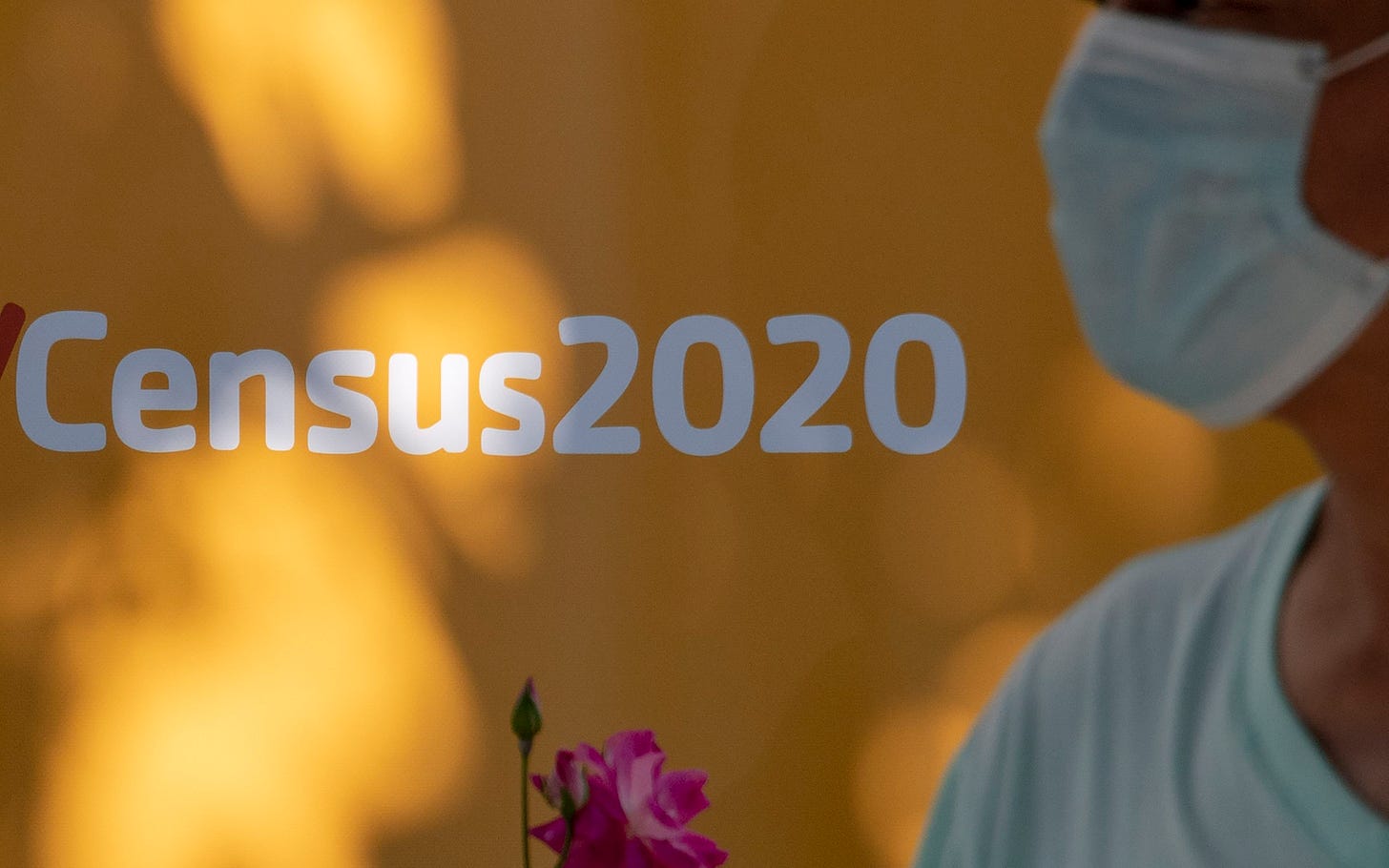The Number of White Americans Is Not "Declining"
The drop in the "white alone" population for the 2020 Census is an artifact of a new survey method—not an actual decline in the number of white people.

The 2020 Census did something interesting in an attempt to capture a better picture of American demographics: There was the usual box to check that designated what race you were—White, Hispanic, African-American, Asian, etc.—but then there was a second box below that which allowed individuals to indicate if one of their parents or grandparents were different from the box checked above. So you could check that you were “White” on the top box, and then say you had an African-American parent, or grandparent, on the second box.
Previous census questions were only interested in the race of the person answering the questions, not their ancestors. And the result of new 2020 mode of questioning was that for people who said that they were one designation—again, let’s say “White”—but then said that they had a relative who was of a different race—again, let’s pretend it’s an African-American grandparent—the respondent was now classified as “multiracial” in the census count.
The net effect was about what you’d expect: The new census question moved millions of people from Column A to Column B. This was especially true among those who had previously been classified as “white alone.”
In 2010, there were about 223 million Americans who were counted as “white alone.” The number dropped to 204 million for 2020, not because there were actually 19 million fewer white people, but because of the parent/grandparent influence. As you’d expect, the number of “multiracial” respondents went up in 2020, from 9 million to 25 million.
None of this is rocket science—it all makes intuitive sense. And yet, when these numbers were released by the Census Bureau, there was something of a collective freak out.
"I think the worst way in which these data can get used, and have gotten used, is by white nationalists who parrot things like, 'Our group is being wiped out. We are under threat,' Yale psychologist Jennifer Richeson recently told NPR.
But not just white nationalists. Good-faith media outlets have made the same mistake. For example, the Associated Press headline for their story on it was “Census shows U.S. is diversifying, white population shrinking.” Which is half correct. America is diversifying because of immigration and racial intermarriage. But the “white population” isn’t actually shrinking. Again: This supposed decline is almost entirely an artifact of a new classification system.
The problem is—and perhaps you have noticed this—there are segments of the voting public which will believe anything. So if you live in Georgia and you see that the white population has “declined” by about 232,000, you might be alarmed. Same with Arizona and the “loss” 345,000 “whites. Or Texas—which “lost” 3 million whites—and Florida, which “lost” 1.7 million of them.
As the last several years have shown, these narratives matter to a significant percentage of voters, irrespective of their truth. Among Republicans, 34 said that the idea that whites are a declining share of the population is seen as bad or very bad. (Democrats are much less alarmed—only 13 percent see the declining share of whites as bad/very bad.)
So how could the perceptions matter politically? Just to take a for-instance, Republican U.S. Rep. Anthony Gonzalez (OH-16), who is being targeted by Trump for his impeachment vote. His district “lost” 143,000 white and “gained” 100,000 multiracial residents. Peter Meijer is a freshman Republican congressman from Michigan who is also on Trump’s primary list. His district “lost” 10,000 whites and “gained” 44,000 multiracial residents. Congressional primaries have exceptionally low turnout.
And the people who think that “declining” white numbers are bad/very bad may turn out to more energized than the majority who either know the truth about what these numbers mean, or don’t care about them in the first place.

